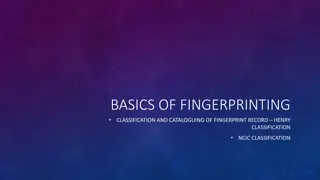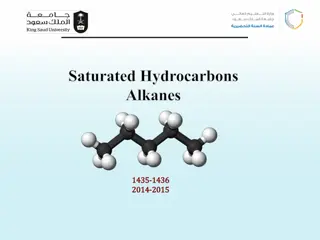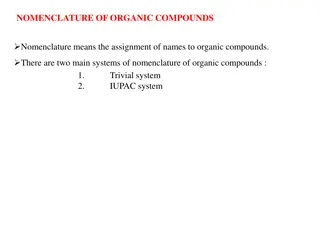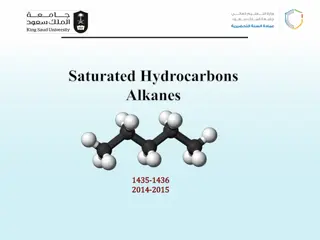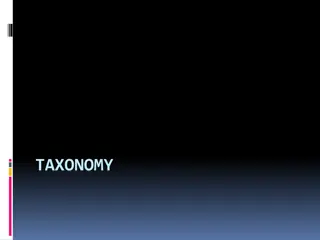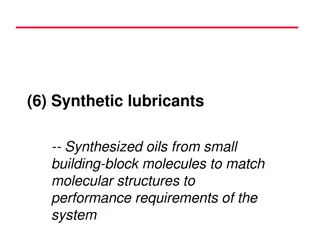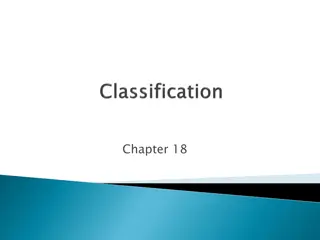Introduction to Hydrocarbons and Classification
Hydrocarbons are compounds composed of carbon and hydrogen. They are classified into saturated, unsaturated, and aromatic types based on the carbon-carbon bonds present. Saturated hydrocarbons, known as alkanes, contain single carbon-carbon and carbon-hydrogen bonds. Unsaturated hydrocarbons have multiple carbon-carbon bonds, while aromatic hydrocarbons are cyclic compounds. You can create models of these hydrocarbons using simple materials like toothpicks and plastic balls. Start with methane (CH4) and explore derivatives like ethane (C2H6). Understanding the structure and properties of hydrocarbons is essential in chemistry education.
Download Presentation

Please find below an Image/Link to download the presentation.
The content on the website is provided AS IS for your information and personal use only. It may not be sold, licensed, or shared on other websites without obtaining consent from the author.If you encounter any issues during the download, it is possible that the publisher has removed the file from their server.
You are allowed to download the files provided on this website for personal or commercial use, subject to the condition that they are used lawfully. All files are the property of their respective owners.
The content on the website is provided AS IS for your information and personal use only. It may not be sold, licensed, or shared on other websites without obtaining consent from the author.
E N D
Presentation Transcript
353CH62 COC1 CLASS 2 PROF. BOSCO BHARATHY JESURAJA WELCOMES YOU TO CLASS 2
CLASSIFICATION Hydrocarbons are of different types. Depending upon the types of carbon-carbon bonds present, they can be classified into three main categories : Saturated (i) unsaturated and (ii) aromatic hydrocarbons. (iii)
Saturated hydrocarbons Saturated hydrocarbons contain carbon-carbon and carbon-hydrogen single bonds. If different carbon atoms are joined together to form open chain of carbon atoms with single bonds, they are termed as alkanes. On the other hand, if carbon atoms form a closed chain or a ring, they are termed as cycloalkanes.
Unsaturated hydrocarbons Unsaturated hydrocarbons contain carbon-carbon multiple bonds double bonds, triple bonds or both. Aromatic hydrocarbons are a special type of cyclic compounds. You can construct a large number of models of such molecules of both types (open chain and close chain) keeping in mind that carbon is tetravalent and hydrogen is monovalent.
making models (ASSIGNMENT 1) For making models of alkanes, you can use toothpicks for bonds and plastic balls for atoms. Models of alkanes, alkenes, alkynes and aromatic hydrocarbons can be constructed and take video or photos of such models and send it to me for valuation via email : drboscobharathyughead@gmail.com or through Google classroom or to my whatsApp :+255783613087
ALKANES Alkanes are saturated open chain hydrocarbons containing carbon - carbon single bonds. Methane (CH4) is the first member of this family. Methane is a gas found in coal mines and marshy places. If you replace one hydrogen atom of methane by carbon and join the required number of hydrogens to satisfy the tetra valence of the other carbon atom, what do you get? You get C2H6. This hydrocarbon with molecular formula C2H6 is known as ethane.
ALKANES Thus you can consider C2H6 as derived from CH4 by replacing one hydrogen atom by - CH3 group. Go on constructing alkanes by doing this theoretical exercise i.e., replacing hydrogen atom by CH3 group. The next molecules will be C3H8, C4H10
ALKANES These hydrocarbons are inert under normal conditions as they do not react with acids, bases and other reagents. Hence, they were earlier known as paraffins (latin : parum, little; affinis, affinity). The general formula for alkanes is CnH2n+2, where n stands for number of carbon atoms and 2n+2 for number of hydrogen atoms in the molecule. According to VSEPR theory, methane has a tetrahedral structure which is multiplanar, in which carbon atom lies at the centre and the four hydrogen atoms lie at the four corners of a regular tetrahedron. All H-C-H bond angles are of 109.5 .
Alkanes First three alkanes methane, ethane and propane have only one structure but higher alkanes can have more than one structure. Let us write structures for C4H10. Four carbon atoms of C4H10 can be joined either in a continuous chain or with a branched chain in the following two ways :
PROBLEM 1 In how many ways, you can join five carbon atoms and twelve hydrogen atoms of C5H12? They can be arranged in three ways as shown in structures III V structures, they are known as structural isomers.
ASHANTE WAIT FOR THE NEXT CLASS 3




